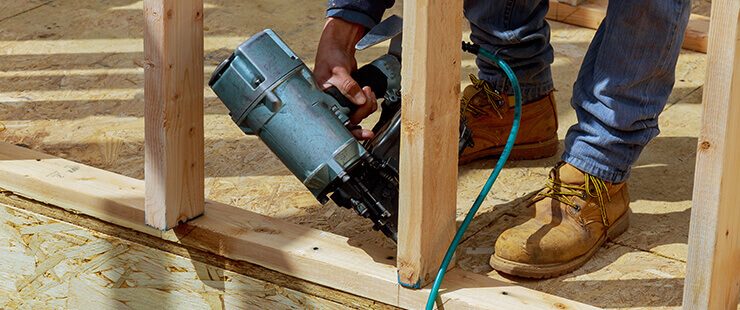Get unique, complex parts easily. No matter your requirements, Chaoyi Spring creates hard-to-produce coil springs and wire forms.
Let us help you create the custom wire form you need, from S-hooks and J-hooks to utility hooks and more.
We work closely with customers across a wide range of industries, helping them design and manufacture made-to-order parts.
Why choose Chaoyi Spring? We prioritize customer-focused collaboration, modern equipment and the latest technology to make your parts per print.
Find the information and guidance you need, from measuring a spring to learning about materials, placing an order and much more.
In the realm of physics and engineering, the concept of an 'ideal spring' stands as a cornerstone, a theoretical construct that embodies the perfect elastic response. This seemingly simple yet


In the realm of physics and engineering, the concept of an 'ideal spring' stands as a cornerstone, a theoretical construct that embodies the perfect elastic response. This seemingly simple yet profound idea has far-reaching implications, influencing our understanding of fundamental concepts like Hooke's Law, simple harmonic motion, and energy dynamics. While no real-world spring can truly be considered 'ideal', this idealized model serves as a crucial tool for analyzing and predicting the behavior of real springs, thereby shaping our technological advancements across countless applications.

The notion of an ideal spring is a theoretical construct that assumes a spring with no imperfections, a utopian entity in the world of mechanics. This idealized spring, devoid of any weight, mass, damping losses, or limitations, exhibits a perfect linear relationship between the force applied and the resulting displacement. This means that the force exerted by the ideal spring is precisely proportional to its extension or compression.
At the heart of the ideal spring lies Hooke's Law, a fundamental principle that describes the elastic behavior of materials. This law states that the force exerted by a spring is directly proportional to its deformation, with the proportionality constant being the spring constant. This linear relationship forms the cornerstone of our understanding of how springs behave, allowing us to predict their response to applied forces.
The simplicity and elegance of Hooke's Law make it a powerful tool for analyzing the behavior of springs, enabling us to calculate the potential energy stored within them, the frequency of their oscillations, and the energy transferred during interactions. These insights are invaluable in designing and optimizing various systems where springs play a crucial role, from clocks and watches to vehicle suspensions and shock absorbers.
While the ideal spring serves as an invaluable theoretical model, real-world springs inevitably deviate from this idealized perfection. Real springs possess mass, experience friction and damping forces, and their elastic limits are finite. These deviations from the ideal spring model lead to more complex behaviors, requiring more sophisticated analysis and design considerations.
Nevertheless, the concept of the ideal spring remains a crucial starting point for understanding and designing with real springs. By understanding the deviations from ideal behavior, engineers can compensate for these factors and ensure the reliable performance of real-world spring systems. Furthermore, the insights gained from studying ideal springs provide a valuable foundation for understanding the behavior of more complex elastic materials and systems.
The idealized concept of the ideal spring has had a profound impact on countless engineering disciplines and technologies. It serves as the basis for understanding and designing systems involving elastic deformation, from the delicate balance springs in watches to the massive springs used in suspension systems of heavy machinery. The insights gleaned from the ideal spring model have enabled engineers to develop and optimize springs for a wide range of applications, leading to significant advancements in diverse fields.
The ideal spring concept extends beyond its direct applications in mechanical systems. Its principles find resonance in other areas of physics, such as electrical circuits, where capacitors can be considered analogous to ideal springs, storing electrical energy. This analogy allows us to apply the same mathematical tools and concepts to analyze electrical circuits, further highlighting the wide-ranging influence of the ideal spring concept.
While the ideal spring may seem a distant theoretical concept, it plays a crucial role in guiding our understanding and design of real-world systems. By recognizing the limitations of the ideal model, engineers can factor in real-world imperfections and design systems that meet specific performance requirements. The journey from theoretical idealization to practical implementation is a testament to the power of scientific abstraction and its ability to guide us in navigating the complexities of the physical world.
In conclusion, the concept of an ideal spring stands as a testament to the power of simplification in scientific inquiry. While no real spring can truly embody this idealized perfection, the insights gained from studying this theoretical construct are invaluable in understanding and designing with real springs. The ideal spring concept serves as a cornerstone of our understanding of elastic behavior, shaping countless technological advancements and reminding us of the profound interconnectedness between theoretical abstractions and practical applications.
Browse some of the custom wire forms and springs that we manufacture. Don’t see what you need? We specialize in made-to-order products that meet your application requirements.
Visit Our GalleryNeed a custom wire form or coil spring? We make it work. Fill out the contact form and a representative will respond within 1 business day. If you have a PDF or CAD file, you can submit to request a quote.